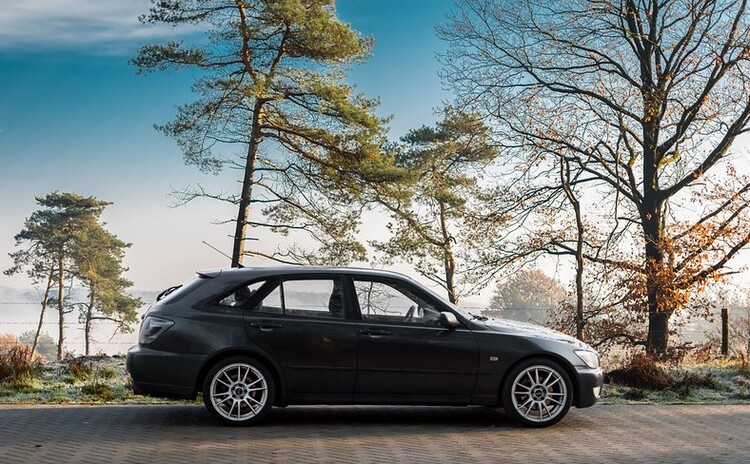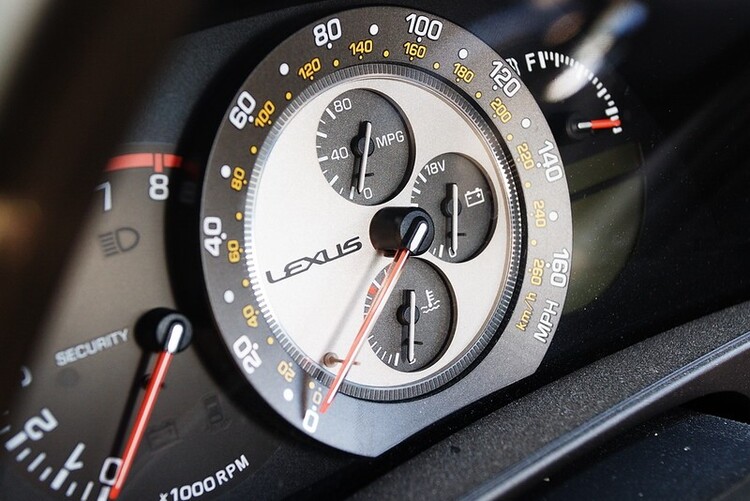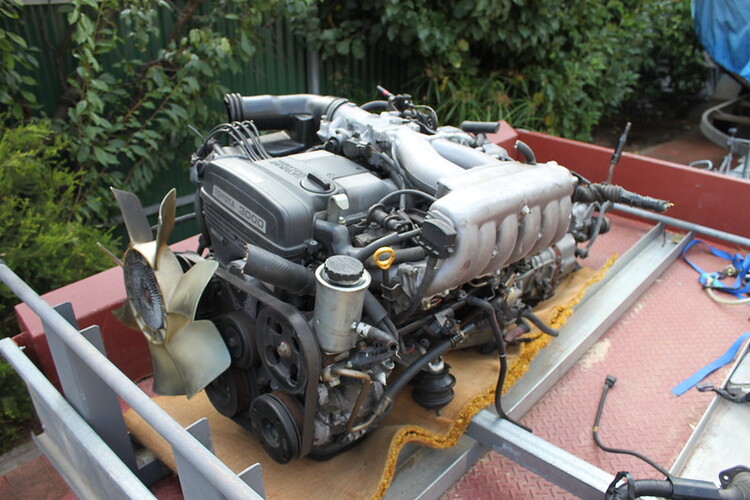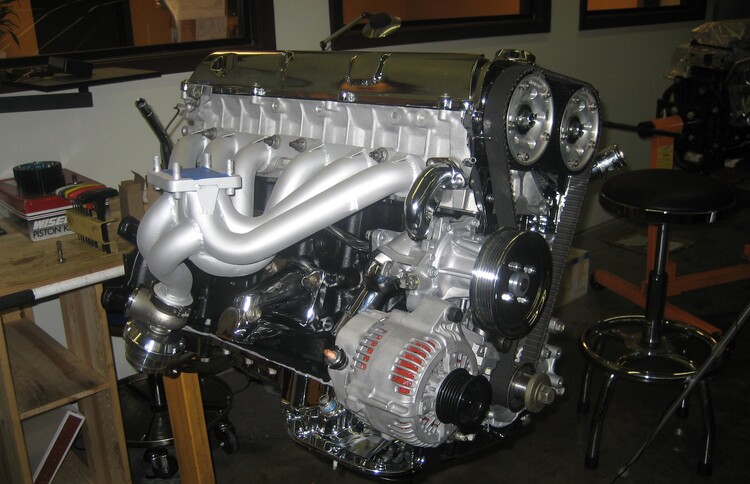IS300 Wagon – 2JZ-Powered Family Fun
Looking for practicality with performance? Lexus may have the perfect affordable answer to your 2JZ dreams (even in 2022) with the rare IS300 Wagon.

Since its introduction in 1989, Lexus vehicles have earned an outstanding reputation for luxurious refinement and peak performance. The company is the luxury division of the automotive giant Toyota and has been producing some pretty sweet cars.
When it comes to luxury sedans, people often consider BMW or Audi, but it’s fair to say that they might also want to consider getting a Lexus.
This was not always the case but since the introduction of cars like the LS400, IS300, and even the V10 LFA, Lexus has become a go-to car brand for all people looking to buy something luxurious and reliable, and that too for a pretty good price.
Reliability is something that Lexus and Toyota both are proud of. Which is the main reason why you still see Lexus cars from the 1990s on the road even today.
Lexus IS300 History
The IS300 is one of the early and popular sedans from Lexus. The IS300 gained its way to fame through its driving experience, reliability, and build quality.
In fact back in 2001, for the same price tag, people could’ve been buying a 3-series BMW, but the IS300 was more nimble and felt more fun to drive.
BMW was obviously ahead in selling their 3-series, with 200,000 vehicles selling across the globe, but for Lexus in the United States, selling 30,000 of the IS300 was considered a victory.
Even BMW owners at that time praised the 3.0L, rear-wheel drive car, saying it handled better and had exceptional ride quality.
JDM enthusiasts also welcomed the car, which was originally a Toyota Altezza from Japan, but Lexus had come through, and the car was packed with features like adjustable heated seats, auto-dimming rearview mirrors, HID headlamps, and other goodies that appealed to a lot of buyers.
The IS300 was launched in the US in July 2000, and alongside the sedan, a hatchback crossover was also introduced, which is what we’re going to be focusing on.
Are IS300 Wagons Rare?
When the car first rolled out in 2001, only 100 people bought them. Toyota records sales of around 3,000-4,000. So yes, the IS300 Wagon has somewhat become an automotive unicorn, which means that the car is hard to find and a lot overpriced, parts are expensive and not available, and it would definitely cost a dollar higher if you go for repairs.

In the US, back in 2002, people were still crazy about 2-door coupes, and the average businessman preferred a 4-door sedan over anything. People who wanted a bigger car went and bought SUVs or even compact SUVs, which have gained significant popularity in the market. And some people also preferred Volvo, which had its own community
How many Lexus IS300 wagons were made?
Wagons were not that popular in the US in the 2000s. Hence production was kept minimum, around 1% of the total sedans that were being made. The Altezza Gita was the JDM brother of the IS300 Wagon, production of this was also kept low.
The planned production of the IS300 Wagon was set at 3,000 units/year, but the car did poorly in the market. Production of the wagon was lowered further after the first year, and Lexus only managed to make around 4,000 units.
Wagon-y Goodness With A 2JZ Powerplant
Ah yes, the 2JZ, every tuner’s dream engine. The inline-six from Toyota is probably one of the most famous engines ever built, and for pretty good reason too.
Firstly, the 2JZ has a capacity of 3.0L, which means that it has a large displacement, but it’s the overall design of the engine that makes it a favorite amongst car lovers all over the world.
See, Toyota was over-engineering everything when the 2JZ was released, and this meant that the engine was perfect in all aspects.
The Lexus IS300 wagon is equipped with a 2JZ-GE. More importantly a 2JZ-GE with VVTi (Variable Valve Timing with intelligence).
How this fits in will be discussed later, but to start this off, even though the 2JZ-GE in the IS300 Wagon is a powerful engine, it’s still not the best 2JZ variant out there.
The Supra had the holy grail 2JZ-GTE, which is the highly-desirable turbo variant of the 2JZ. A previous model of the Supra, the MK3, featured the 1JZ. Interested in the differences between the two? Head over to our in-depth 1JZ vs 2JZ guide.
For those of you looking to have some minor fun, the 2JZ-GE will be enough. The IS300 wagon comes with both all-wheel drive, and rear-wheel drive, but the RWD is much more common, and much more fun.
With the engine producing 212-227hp, and 200+ pound-feet of torque, the IS300 Wagon is sure to give you a kick in the head once you step on the throttle. The top speed was 143 MPH, with a 0-60 time of 8.4 seconds.
A five-speed automatic transmission is in place which, to be fair, is not as fun or sporty as a manual, but is still capable of handling a lot of power.
The IS300 Sportcross also features a decent-looking dashboard with one of the best clusters we’ve seen.

Tuning Potential
The 2JZ-GTE engine’s non-turbo sibling, the 2JZ-GE, a 3.0L straight-six with 217 horsepower anThe d 218 lb-ft of torque, was used in the IS300 SportCross Wagon.
The modifications we advise take into consideration that one engine is turbocharged while the other is naturally aspirated. The 2JZ-GE cannot be fully converted fully into a 2JZ-GTE without going through serious work.

The addition of forced induction means adding more stress. Now, the 2JZ-GE can somewhat manage power and boost pretty well because it is constructed on the same platform as its more powerful brother.
There were two transmission choices available for the first-generation IS300: a 5-speed manual and a 5-speed automatic known as the e-shift transmission. Both manual and e-shift variants will send around 180 whp stock to the rear wheels, respectively.
However, the IS300 SportCross only came with the 5-speed automatic. Keep in mind that the e-shift transmission is capable of handling around 400hp, therefore, adding a turbocharger is your best bet if you want more power than 230whp. Interested in adding some turbocharged goodness to your N/A 2J? This article takes a comprehensive look into the best turbo kits for the 2JZ-GE on the market.
We would strictly advise against common modifications like the addition of custom headers and downpipes because they will need to be replaced after adding a turbo. Spending your money on handling-related upgrades will be more beneficial, especially if you’re planning to make high horsepower.
Also bear in mind that a turbo kit will cost you up to $5,000 and if you include the boost controllers, timers, widebands, fuel management systems, upgraded injectors, full exhaust systems, etc., up to $10,000+ for a proper setup.
One of the simplest initial modifications you can make to almost any car is an improved intake. Even though an otherwise stock IS300 won’t gain much performance from adding an intake, it will after the other modifications mentioned are made. Greater combustion is required to generate more power, and air or oxygen is a crucial element in combustion.
An intake manifold will likely add 1-2 whp to a stock 2JZ-GE. However, it will produce gains of 7-10 whp when coupled with these further IS300 bolt-on modifications. The IS300 3.0L has a variety of different intake choices. They all essentially have the same features and advantages.
One of the best stand-alone mods for the 2JZ-GE is headers. More power implies more exhaust emissions. Once more power is added, the stock heads become extremely restrictive, which causes the engine to experience an increase in back pressure.
Because of the backpressure, exhaust gases seep back into the combustion chamber, reducing the quantity of oxygen inside and reducing power. Headers are a wonderful modification for reliability as well because they will aid in lowering the engine and exhaust gas temperatures.
Headers are good for roughly 10whp and 10wtq power improvements due to the decreased backpressure, in addition to having your engine run healthier.
In the IS300, catalytic converters are housed in both the headers and the downpipes. The removal of both of these cats will result in the greatest power improvements because they are mostly responsible for the restriction.
The catch here is that it’s against the law to remove catalytic converters. High-flow cats are an alternative, but they are more expensive and have fewer possibilities because of the age of these 2JZ-GE engines right now. For high-flow cat choices, the power difference is probably about 3whp.
The Y-pipe connects the headers to the cat-back section of the exhaust by bolting right up to them. Two pipes made up of two 2JZ-GE headers each hold three cylinders’ worth of exhaust gases.
The reason the y-pipe is known as a y-pipe is that it joins the two header flanges before combining into a single pipe and bolting to the cat-back exhaust.
Since it houses a catalytic converter and is located behind the headers, the Y-Pipe is the second most constrictive part of the exhaust system. Therefore, improving the y-pipe can help further reduce exhaust system backpressure and boost power.
A little less power is gained than with headers because the y-pipes lie a little further from the engine. However, while choosing a catless option, it still delivers a reliable 8whp.
Unless you want louder exhaust sounds, a cat-back exhaust system is undoubtedly the least beneficial modification on our list. Catbacks are the most expensive exhaust part and offer the smallest increases in power.
Having said that, they are capable of producing roughly 2-3 whp and do minimize some exhaust backpressure.
The most innovative and likely most sophisticated modification on our list is an improved exhaust cam gear. An exhaust gam gear on the 2JZ-GE regulates the timing of the exhaust valve.
The adjustable cam gears can also help IS300s with the standard camshaft with bolt-on modifications even though they were designed particularly for users using aftermarket cams with more lift. More valve overlap is advantageous for NA cars and can be adjusted with the gear.
People that have turbocharger systems have seen improvements of up to 20 hp with a variable exhaust cam gear. Most experts advise setting the exhaust cam gear to -4 for optimum performance and gains in a modded IS300 with factory cams.
A tune is the last modification on our list but the one that will tie everything together. Tuned engines increase power and performance by modifying the ECU and other factors including fueling, timing, and others.
As the original ECU tune isn’t designed for better airflow, less backpressure, etc., tunes become even more crucial if modifications are introduced.
Unfortunately, it is not possible to flash-tune the stock ECU on these vehicles. The previous standard tuner was the Apexi SAFC 2, but as far as I’m aware, it’s no longer manufactured. The options now include purchasing a standalone ECU, however, they are pricey and very sophisticated in terms of user-friendliness.
We advise consulting a tuner and learning more about the alternatives offered in detail. Later, we’ll delve more into this subject in a separate post.
You are undoubtedly already aware of what the underappreciated 2JZ-GE engine is capable of, regardless of whether you have a Lexus or a Toyota in your possession.
With an NA-T turbo upgrade, you’ll be astonished at how fast and easily you’ll be able to generate some outstanding power figures, even though your 2JZ-GE won’t feel quite like the adored 2JZ-GTE in standard form.
Want to know why the 2J is so sought-after? Head over to our 2JZ-GTE specs guide for the answers to all your questions.
As the price of the 2JZ-GTE continues to rise, it makes more sense than ever for the GE engine to receive the turbocharged adoration it so richly deserves. The 2JZ-GE is frequently disregarded in favor of its more remarkable twin.
Thankfully, the 2JZ-GE and GTE have the same rods and crankshaft, with the choice of pistons being the only noticeable variation between the two engines. So even though they are naturally aspirated, the two 2JZ engines were built by Toyota with forced induction in mind.
Although the pistons are different, they are still more than capable of handling acceptable power levels. You won’t likely need to think about choosing forged pistons until you start chasing massive numbers.
Since the 2JZ-GE has a 10:1 compression ratio, we advise against using more boost than 7-8 PSI before you have to make adjustments to ignition timing, for example. Once you start thinking about exceeding 350-400 WHP, you should start thinking about upgrading your fueling systems, such as the pump and injectors.
The 2JZ-stock GE’s compression will also probably only allow you to reliably produce 400-450 WHP before you need to start thinking about improvements like a thicker head gasket.
Naturally, there will be a lot more to think about if you have big-power aspirations. Even though a number of owners have enjoyed 800 WHP from the factory rods and pistons for a while, we’d advise changing them just to be safe.
And oh, here’s a completely built 2JZ-GE for you to admire!

Reliability & Common Issues
The Lexus IS300 is regarded by Toyota fans as one of the most dependable vehicles produced by the company. It had a 3.0-liter inline-six engine with 217 horsepower from 1998 to 2005. Additionally, it could feature an automatic or manual transmission.
Although it weighed 3,255 pounds, it offered both comfort and athletic performance. Its engine was a naturally aspirated 2JZ GE Supra Mark IV engine that was overbuilt and tested and true. Although there aren’t many issues with this car, those that do need to be addressed.
Owners of the first-generation IS300 have voiced complaints about a lag time between applying the brake and engaging the transmission.
When the driver steps on the gas, the engine cranks but the car doesn’t move for a few seconds; this seems to only occur with automatic transmissions. Low speeds, both forward and backward, are affected.
Denso radiators, which utilized plastic tubing, were standard equipment for IS300s. The neck that joins the intake to the hose will eventually split. Driving will cause pressurized, hot coolant to spray all over the engine compartment if the radiator cracks.
The 2JZ-GE can also overheat. Mishimoto sells a performance radiator for $280 that employs metal tubing to get around this issue. It’s reasonably priced and might prevent the engine from suffering serious overheating damage.
Many IS300 owners also complain about the “gurgling” noise their vehicles make. Owners with experience explain this noise as air buildup in the heater core. Bleeding the coolant is the only method to get past this.
Since the IS300 lacks a bleeder screw, the radiator cap must be taken off. Start the engine of the vehicle and crank up the heater. Run the engine until the radiator fan engages, then turn it off and add more coolant to replace the released air.
During the bleeding process, it helps to replace the radiator cap with a sizable funnel to prevent coolant from sputtering everywhere. Radiator flushing might become routine maintenance.
Given Toyota’s poor track record with automatic gearboxes, it appears that throttle reluctance mainly affects certain vehicles. The best choice might be to use a manual. Nevertheless, these issues aren’t crippling as long as they are resolved right away.
Conclusion

The IS300 is a fun car to drive, probably one of the best cars with a wagon body style. It is the perfect car for long road trips and is even pretty good for a daily commute, or as a lower-spec sports car.
FAQ
In this section, we’ll cover some of the commonly asked questions about the Lexus IS300 Wagon.
What is the IS300 SportCross?
The Lexus wagon was called the IS300 SportCross, and it was based on the 2001-2005 Lexus IS sedan, the IS that many enthusiasts consider to be the best one due to its small size, sharp handling, and tunable 6-cylinder engine.
Is the IS300 SportCross rare?
The IS SportCross is an astonishingly rare car, but it is an excellent one that doesn’t seem to get the recognition or credit it deserves.
Did the Lexus IS300 SportCross come in manual?
Unfortunately, the SportCross was never offered with manual transmission. Each of the SportCross models came with the A650E 5-speed automatic. Kudos to anyone that does a manual swap!
















